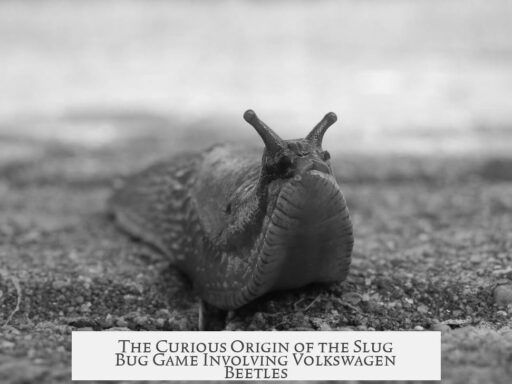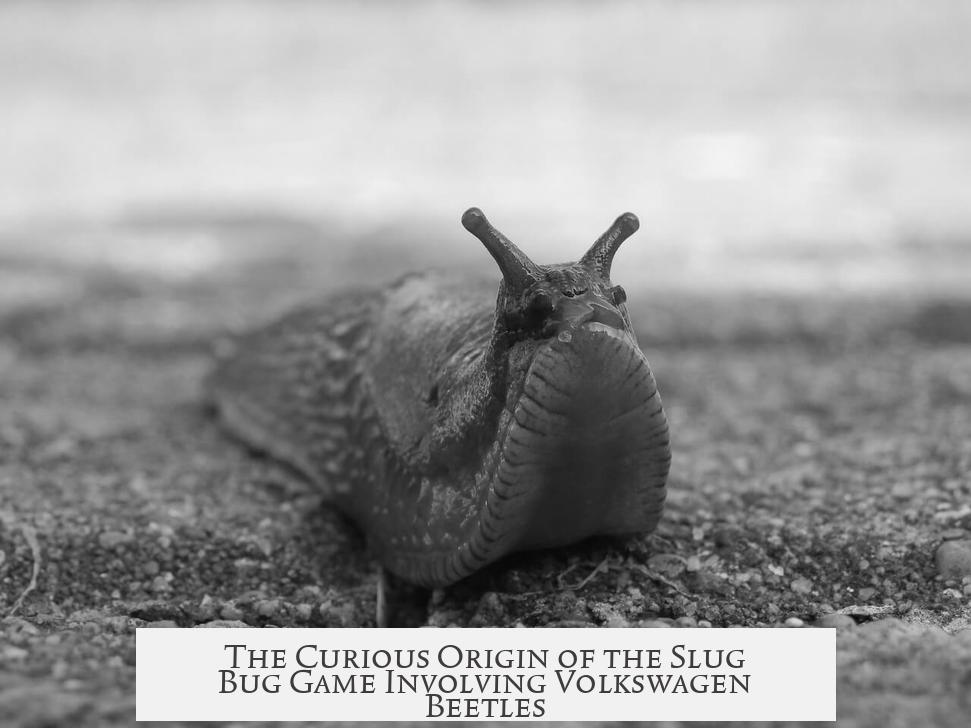The children’s game involving spotting a Volkswagen Beetle and then punching another child—often called “Slug Bug” or “Punch Buggy”—originates from the United States, most likely between the mid-1950s and early 1960s, and has no precise known inventor or documented origin.
This game relies on spotting a Volkswagen Beetle, a recognizable, distinctive car that entered the American market after 1949. The Volkswagen Beetle first arrived in the U.S. via an individual car in 1949, but widespread importation and recognition started in the early 1950s. Though only a few Beetles were initially sold (around 9,000 by 1955), they slowly gained cultural presence.
Due to the rarity of Beetles before the mid-1950s, the game likely emerged when the car became common enough to be seen frequently by children. This enables the game’s basic premise: noticing the distinctive vehicle and reacting physically—by punching a friend or calling “Slug Bug”—to score points.
Tracing the exact start of the game is difficult because children’s oral culture rarely leaves formal records. Research into children’s slang and games, including that by sociologist Gary Fine, shows such games often arise spontaneously from children’s social circles. One curious child likely invented the game, sparking a chain reaction as peers shared it with their friends.
The earliest documented print evidence of the game dates to the late 1970s, a copyright entry from 1977. However, newspaper articles from the early 1960s reveal the game’s presence. A 1962 newspaper mentioned “Slug Bug” with clear game rules played by grammar school children. By 1964, references in advice columns and mentions by Volkswagen’s PR managers confirmed the game’s popularity. This suggests the game was well established by the early 1960s.
The game’s linguistic roots lie in pre-adolescent slang. The terms “Slug Bug” and “Punch Buggy” represent a subcultural language rung used mainly among children. Unlike adult slang, these phrases spread informally and swiftly through peer interaction without formal documentation.
| Timeframe | Event or Evidence |
|---|---|
| 1949 | First Volkswagen Beetle arrives in New York |
| Early 1950s | Initial VW import increase, but low sales |
| Mid 1950s | Volkswagen still rare, unlikely game origin period |
| 1962 | Newspaper references “Slug Bug” game with rules |
| 1964 | Advice columns and Volkswagen PR acknowledge game |
| 1977 | First known copyright mention in print |
Volkswagen’s public image struggled in the 1950s due to associations with Nazi Germany. Advertising was sparse until the 1960 DDB campaign improved perceptions and boosted Beetle sales, increasing the car’s visibility for children to notice. As Beetles became more common, so did the game.
Volkswagen itself recognized the cultural impact of the game decades later, referencing a fictional inventor “Sluggy Patterson” in a 2010 ad campaign. This reflects the game’s entrenched status in American childhood folklore.
- The “Slug Bug” game arose informally among children and spread by word of mouth.
- It requires spotting a Volkswagen Beetle and reacting with a playful punch or shout.
- Its origin is US-rooted, emerging post-1949 after Beetles entered the market.
- Documented mentions date from the early 1960s, aligning with increased Beetle visibility.
- The game’s exact originator and precise date remain unknown due to children’s oral culture.
- Volkswagen’s 2010 ad acknowledged the game’s cultural significance.
What’s the Origin of the Children’s Game Where You See a Volkswagen Beetle and Punch Another Child?
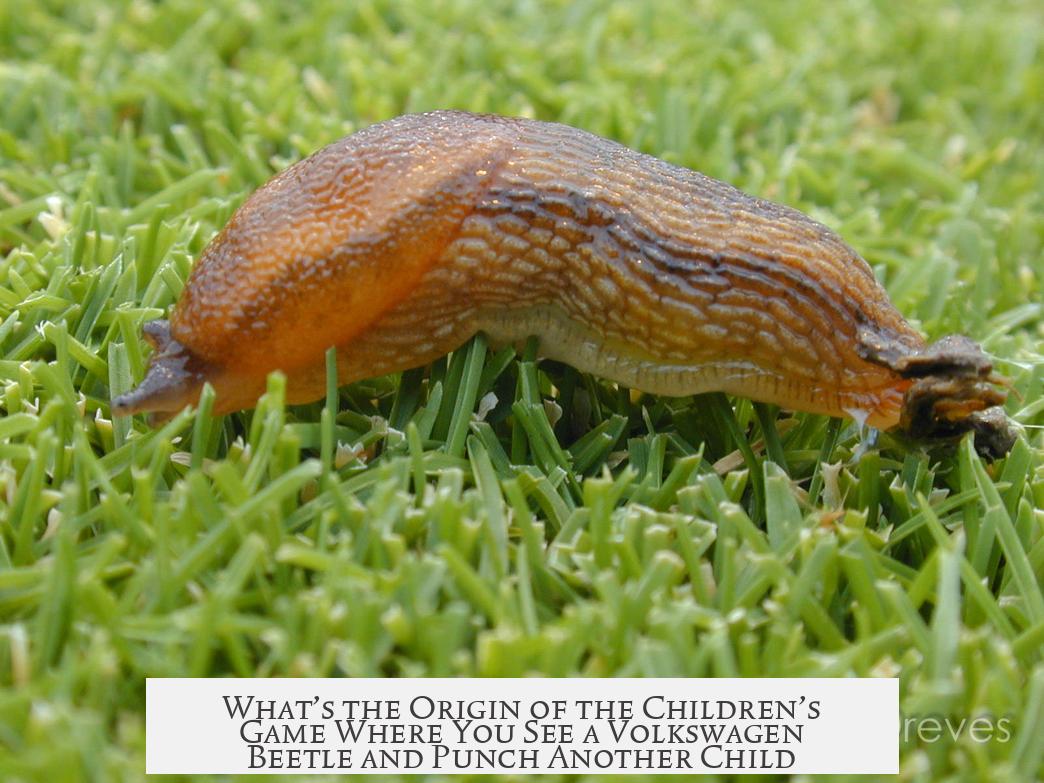
The children’s game involving spotting a Volkswagen Beetle, often called “Slug Bug” or “Punch Buggy,” sprang up somewhere in the United States between 1955 and 1962—but its true origin remains a mystery, tucked away in the nostalgic fog of oral playground culture. This playful punch game, deeply engrained in American childhoods, is more than just a one-two jab on a friend’s arm; it’s a fascinating social and linguistic phenomenon that defies a clear “who started it?” story. Let’s dive in.
Ever wonder how kids settled on punching a peer when spotting a car—and why that car happened to be the Volkswagen Beetle? This blog unpacks the timeline, cultural context, and rumors while highlighting the quirks that make “Slug Bug” a retro classic.
Why Is It So Hard to Pinpoint the Origin of Kids’ Games Like Slug Bug?
Unlike adult inventions stamped into patent filings or marketing campaigns, children’s games and slang often arise spontaneously in playground conversations, hopping from kid to kid without paperwork or formal creation dates. Imagine that— a slang or a game born entirely out of youthful creativity and oral tradition, then disappearing into the shadows undocumented. Researchers who try to trace such origins often hit dead ends, like when sociologist Gary Fine studied the slang term “zoid” but found no written record from kids themselves.
With “Slug Bug,” the problem is similar. Kids don’t typically write letters to editors reporting their inventions or tag their slang in newspapers. Instead, the game’s rules, names, and nuances live purely in speech, evolving with each generation of players. It’s a bit like trying to locate the birthplace of a cloud—ever-changing, elusive, audience-shared, but not penned down.
The Volkswagen Beetle Game: A US-Born Playground Phenomenon
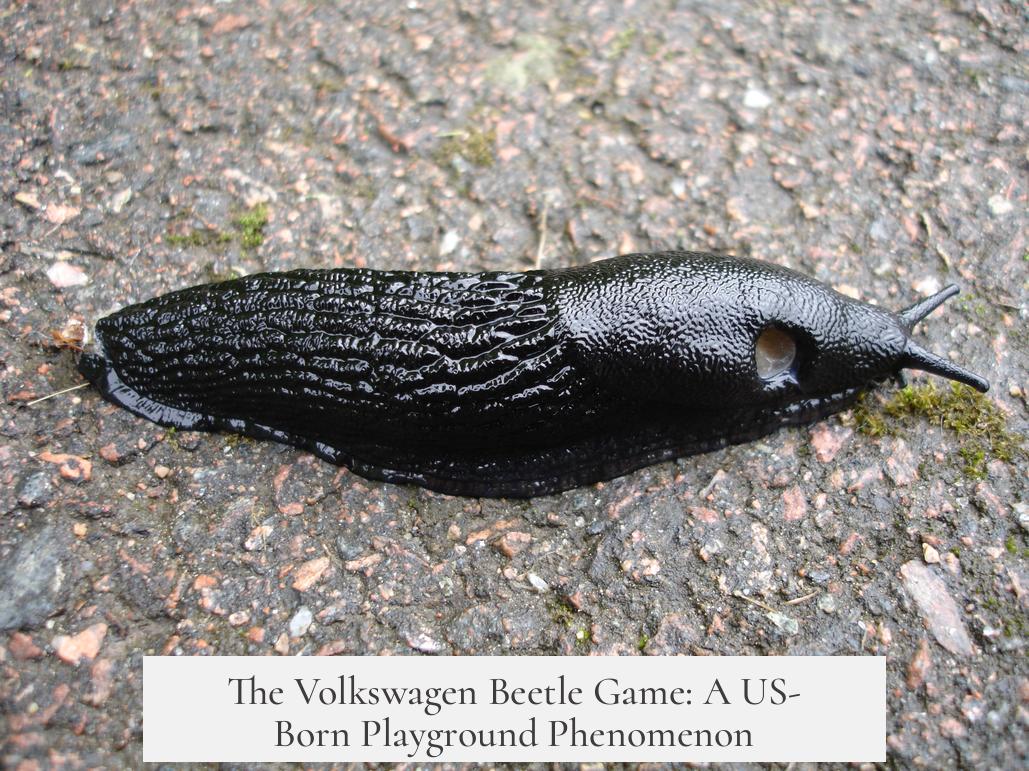
The game clearly hails from the United States and couldn’t have existed before 1949. Why? Because that was the year the first Volkswagen Beetle crossed American soil. Prior to that, no Beetles meant no Slug Bug targets. The Beetle arrived on January 17, 1949, in New York, but this initial car was little more than a novelty—far from the common sight needed for a game based on spotting the vehicle repeatedly.
Between 1950 and 1955, Volkswagen sold only about 9,000 Beetles in the U.S. market, a number too small for rapid, widespread playground recognition. Volkswagen’s sales and presence didn’t exactly boom; in fact, the brand struggled against post-WWII stigma due to its Nazi-era origins. Sneaky advertising campaigns didn’t begin until around 1960, when Volkswagen used self-deprecating humor to charm Americans, turning the Beetle’s quirky image into a lovable icon.
Earliest Documented Mentions and Rules of Slug Bug
The earliest *official* mention of the “Slug Bug” game appeared only in 1977 in a curious booklet titled Volkswagen is very accommodating. But there’s a heap of evidence showing the game’s vocabulary and play were well known in the 1960s.
For example, a 1962 newspaper snippet in The Corvallis Gazette-Times discusses the “Slug Bug” game with clear rules: upon spotting a Volkswagen Beetle, the first player shouts “Slug Bug” and punches another player (usually lightly but firmly) on the arm. The game was popular enough by 1964 that the advice column “Helen Help Us!” even featured questions about Slug Bug, prompting a Volkswagen PR manager to comment on the “correct” rules—imagine the company weighing in on playground punches!
This timeline pins the origin between 1955, when Beetles began appearing in more significant numbers, and 1962, when newspaper evidence confirms its widespread use.
How Did the “Slug Bug” Game Spread Among Kids?
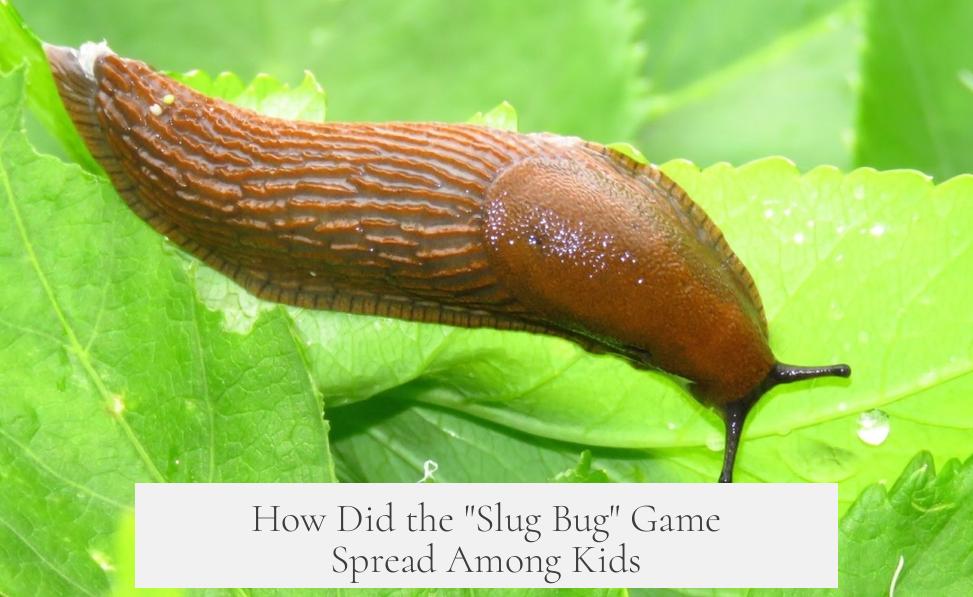
Researchers believe, much like the slang term “zoid,” this game started with one clever, possibly mischievous child. That child “invented” the game, explained the rules to friends, who told others, and the trend spread through playgrounds, schoolyards, and car rides. Oral transmission made the game fun and flexible—kids could tweak rules, invent penalties, or create their own variations, all without adults noticing.
Some claims tie the game’s origin to advertising or concocted tales like “Sluggy Patterson,” a fictional character Volkswagen referenced in a 2010 ad campaign. But most cultural sleuths agree that nobody officially invented Slug Bug. It’s the kind of folk creation kids own collectively.
Why the Volkswagen Beetle?
Not any car, but the Beetle got chosen for a series of reasons:
- The Beetle’s design was unmistakable and compact, making it easy to spot quickly.
- Its round shape and bubble-like windows gave it a friendly, cartoonish vibe appealing to kids.
- The novelty factor worked perfectly; children love outlier things that stand out.
Before the Beetle became a common street sight, the game simply wouldn’t have the necessary “spotting” factor. Cars like Cadillacs or Fords were too common and nondescript across daily views. The Beetle was a visual gem.
The Cultural and Linguistic Angle: Playground Slang in Action

The term “Slug Bug” itself is a prime example of pre-adolescent subcultural slang. Children’s peer groups develop their own linguistic codes, distinct from adult language. Sociologist Gary Fine’s 1987 research highlights that slang like “Slug Bug” belongs squarely in the kids’ linguistic playground, separate from adult speech patterns or corporate jargon.
The game is an early example of how language, humor, and social play intermingle, showing how children craft identities and shared cultural moments. It also reflects kids’ innate knack for mixing language and physical activity—a punch on the arm doubles as both challenge and camaraderie.
How Did the Post-War Context Affect the Game’s Popularity?
The Volkswagen’s Nazi associations hindered the car’s popularity during the 1950s. Few VWs meant few chances to “Slug Bug.” The company’s low advertising spend didn’t help, either. It was the clever 1960s ad campaign by Doyle Dane Bernbach (DDB) that flipped the script. The campaign embraced the Beetle’s peculiarities with humor, endearing the car to Americans and boosting sales dramatically.
This rise in Beetle sightings likely coincided with the game’s spread, making it a game that thrived alongside the car’s cultural renaissance.
What Can We Learn from the Mystery of “Slug Bug’s” Origin?

This game teaches us that some of the most memorable childhood traditions don’t need a neat, archived origin story. Their power lies in collective memory and shared interactions. You might never find a birth certificate for “Slug Bug” —and that’s okay.
In fact, that mystery enriches the game’s charm, connecting generations who have played it without knowing its origin, from the 1960s schoolyards to today’s children riding in cars under the sun.
Practical Tips for Playing (Safely!)
Given what we’ve learned, if you want to revive or share this game, here are some pointers:
- Keep it light. The “punch” is usually a gentle tap—no bruising allowed.
- Establish clear rules. Decide if only certain parts of the car count, what counts as a valid call, and how to handle disputes.
- Be inclusive. Everyone should have fun, so avoid targeting kids who don’t want to play.
- Use it as a social icebreaker. Cars and travel can be boring—this game turns spotting a Beetle into laughter and bonding.
In Conclusion: The Slug Bug Game Is a Playground Classic with an Enigmatic Past
The origin of the game where kids spot Volkswagen Beetles and trade punches is locked somewhere between 1955 and 1962, independently invented by enterprising children in the U.S., growing organically like a playground virus. The Beetle’s arrival, combined with cultural shifts in advertising and American acceptance, set the perfect stage for this sluggy tradition.
So next time you call out “Slug Bug!” on a road trip and quickly tap your buddy, remember you’re part of a playful mystery decades old—a small link in a chain of innocent, spontaneous fun born fresh on the playgrounds of youthful America.
